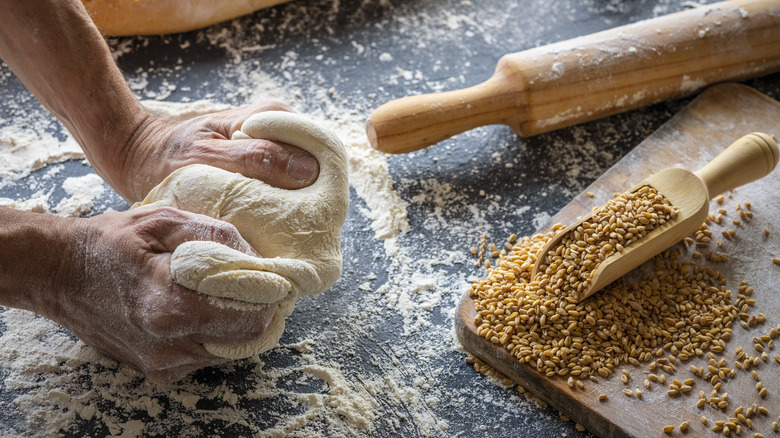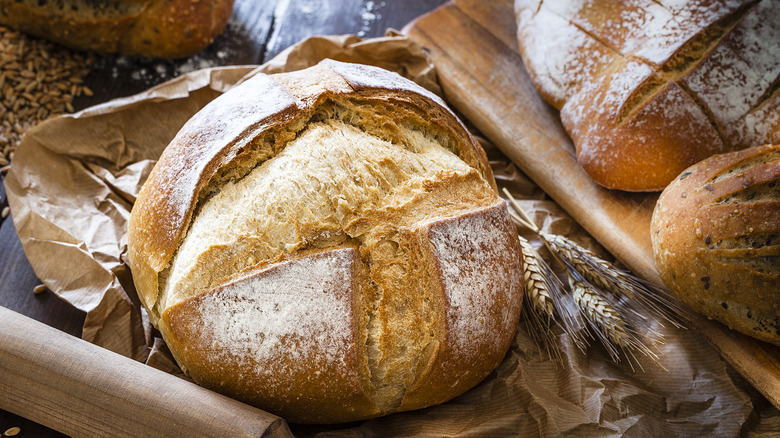Think Twice Before Swapping The Flour Of Your Bread Recipe
Whether you want to impart more nutrients into your homemade bread recipe or the cupboards in your kitchen are a bit sparse, you may well courageously decide to make a few ingredient adjustments in the dough for your go-to bread recipe. Unfortunately, after removing your baked loaf from the oven, you discover that it isn't quite the fluffy, airy piece of culinary art you had planned on serving for dinner.
All flours aren't created equal, and when it comes to perfecting bread loaves that deliver the perfect combination of a crunchy exterior and a spongy, delicate inside, ingredients and measurements matter. Different kinds of flours contain a range of proteins and bran which can interact differently with gluten and impact the density, texture, and flavor of your baked goods. If you do need to make a sudden switch up due to dietary restrictions or missing ingredients, proceed with careful intention if you want to bake bread that leaves you eager to slice, toast, and sink your teeth into.
The nuances of making bread
Flour is a key component of how your bread will end up in both flavor and texture. Some freshly milled flours can add notes of butter, grass, and spice to your finished loaf and can help you sample some of the best-tasting bread you've ever buttered at home.
When it comes to choosing from the many types of flour available to bakers, do your homework. Breadmaking is a science, after all. Bread flour offers a higher count of protein and gluten which can help you make a chewier loaf, while all-purpose flour is better suited for baked goods that don't require rising time. Consider the protein present in the flours you are substituting for the best chance of success, and remember that any bran in the flour can change how your bread turns out, just as how different flours can soak up more or less water when added to your dough. One-to-one flour substitutions using chickpea, oat, buckwheat, or almond flour could be detrimental to your recipes, so consider swapping out only a small portion of the initial amount of flour, adjust liquid as needed, and take notes so your loaves are even better the next time you set out to bake in the kitchen.

